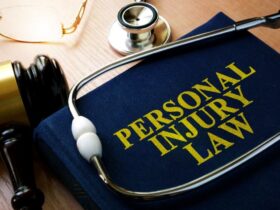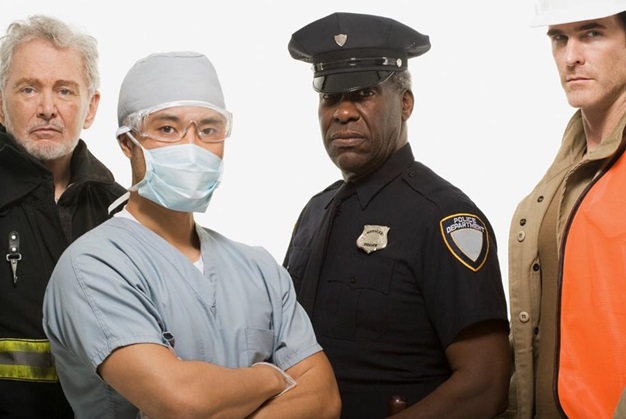In recent years, businesses and public services have become increasingly aware of the need for greater cultural diversity in their workforces, hiring practices, and the way they present to the world at large. Major nations are made up of a wide mix of ethnic, social, and religious groups, but too often this mix is not represented within any given company or institution, with often a very narrow range of types vastly outnumbering all others, particularly within positions of power.
What does cultural diversity mean?
Cultural diversity may mean ensuring that people of color are adequately represented, but it may also involve redressing the balance in other ways. Depending on which groups are underrepresented in a particular workforce, cultural diversity may involve hiring more women, more LGBTQ+ people, or more individuals from different social classes or disadvantaged backgrounds. It may be appropriate to have a greater mix of different religious faiths, or even a greater age range.
Cultural diversity is more than just an exercise in box-ticking, however. A more representative mix of people can bring real and immediate benefits to any workplace or organization. Nowhere is this truer than in the field of public safety.
What is public safety?
Public safety, also referred to as public security, is the business of keeping the public safe and secure from a wide range of potential threats. These threats might be man-made, as in crime, terrorism, and anti-social behavior, or natural risks such as extreme weather or an epidemic. The severity of the issues addressed by public safety can also vary widely. Day-to-day policing like crowd control and security at a national event, or addressing juvenile delinquency, are as much a part of the public safety remit as disaster planning against the most unthinkable scenarios.
Government departments, private businesses, and volunteer organizations are all involved in maintaining public safety. Emergency services, law enforcement, border control, and online or cyber security all fall within the public safety sector. Wilfrid Laurier University Online runs the only academic public safety program in Canada, created in alignment with the official principles of Public Safety Canada. Students can take a choice of graduate diplomas or a Master of Public Safety Laurier that will equip them with all the skills they need to work in this demanding and important field.
Fresh insights
One of the most rewarding benefits of a culturally diverse team is the range of new skills, different perspectives, and fresh insights that the team members bring to the table. This is especially useful in public safety roles. Cultures that have developed in specific environments over centuries often face certain recurring threats that other cultures may have never had to deal with, or have only encountered infrequently. As a result, the people of that culture may have traditional, tried-and-tested ways of countering these threats that they can share with teammates when they take on a public safety role.
For instance, an individual from a culture that has evolved in an environment of recurrent mass flooding may have useful skills and knowledge to share in terms of flood defenses, instilling awareness among the population, and effective rescue work. They may also be able to provide greater awareness of the risks faced by a particular culture and how these can be addressed. A career test can be used to make sure these individuals are in roles where their unique qualities are put to the best use.
Greater understanding
Perhaps the most important quality a culturally diverse team can bring to a public safety assignment is the ability to understand and be understood by a wider range of people. The world is a culturally diverse place and so is, for that matter, the average city. It is vital that a group committed to public safety reflects the diversity of the general population, so that members of the public can relate to the team.
Cultural differences can easily lead to misunderstandings, and a culturally diverse team is the best defense against this happening. In public safety it is essential that information is quickly received and understood, without any margin for misinterpretation. Messages not getting through can lead to a greater risk of injury or loss of life within a community.
Better communication
Communication is the most important aspect of public safety. From making people aware of risks to directing them to escape routes, public safety workers must be able to get their message across. If there is a language barrier or scope for misunderstanding due to cultural differences, then that message is compromised. Knowing that you have people on your team who can flag up any culture-specific challenges in advance, and who are able to help overcome them on the ground, is invaluable when it comes to effective public safety management.
A team that is culturally diverse also communicates more effectively among itself, as a wider range of ideas and concepts are included in the discussion. A team that is culturally narrow may fail to anticipate eventualities that a more diverse group would have naturally considered. In this way, cultural diversity adds depth as well as clarity to all forms of communication.
Understanding nuance
Even when the public safety team is not facing an actual language barrier, there may be subtle nuances in communication within a particular culture that could lead to misunderstandings. These nuances can usually be understood and explained only by a member of that culture. Examples might include body language, tone of voice, speaking faster or slower than is expected, and a range of other cues that could be exhibited in conversation, dress, or facial expressions, but that could easily go over the head of an outsider.
Similarly, members of the public safety team could unwittingly give out signals that are interpreted as hostile, offensive, or just confusing. By understanding and appreciating cultural nuances, information can be exchanged more efficiently, and confrontations avoided.
Community relations
Having a team that reflects the social, ethnic, cultural and gender make-up of your community leads to better relationships with that community. If a public safety team is entirely or predominantly made up of members of a narrow cultural grouping, then it could create mistrust from the very people you are trying to help. This is especially true if the public safety team is drawn from a group perceived as being a cultural elite, or socially dominant, and those being helped are from a disadvantaged or disenfranchised minority group.
In such a situation, the public safety mission may be compromised if it is seen as patronizing, high-handed, authoritarian, or worse — despite the team’s best intentions. Having a culturally diverse group on the front line minimizes the risk of misinterpretation in this way. General relations between subsections of the community may also improve if members of cultural groups are perceived as being helpful due to their inclusion in a public safety team, rather than as threats, as can be the case if different cultures do not normally mix.
Diversity training
Diversity training is important for any organization that deals with the public, but a theoretical understanding of cultural differences can only go so far. First-hand experience of a culture is invaluable as a means for truly appreciating its values and having members of that culture embedded in your team is the best way to facilitate this.
Having a culturally diverse team therefore benefits all the members of the team, as they can learn from each other and become more versatile and adaptable in how they relate to the public. The mixing of social and ethnic groups within the team will enable its members to become more confident and to act with greater sensitivity when stepping outside of their own cultural background.
Public trust
As mentioned above, having a culturally diverse team improves community relations. It also inspires public trust, as the team is less likely to be seen as representing a single cultural interest. Unfortunately, public safety teams are often implicated in the delusional narratives of conspiracy theorists, who accuse them of participating in ‘false flag’ events or otherwise having a vested interest or secret agenda.
Even outside of the vocal minority that spread conspiracy theories, those implementing public safety may be seen as not always acting in the best interests of the people they are trying to help. This is understandable as teams are most visible when things are going wrong and normal life is turned upside down. People may be urged to leave behind homes, possessions, and even loved ones, and the public safety team are sometimes held responsible for this.
A culturally diverse team makes it less likely that those responsible for public safety are seen as ‘faceless others’ serving undeclared interests. It helps greatly with public trust if the team are seen to be made up of individuals from different backgrounds and walks of life, holding different personal beliefs and belonging to different communities.
Identification
People generally put more trust in people who look like them. When dealing with diverse communities, public safety teams will get better results if community members feel they can identify with at least one individual on the team.
Often, in a public safety role, it is important to establish a personal connection quickly. You might be trying to help a person who is frightened or injured. You need to calm them down enough so that they will listen, understand, and cooperate with what they are being told.
When people see someone from the same ethnic or cultural background as them, they feel that they have some common ground. They also feel that they are seen and understood. In this way, cultural diversity makes the public safety team’s job much easier.
Interviews
Public safety work may at times involve interviewing members of the public. This can take place either formally, as in questioning by the police, or informally, as in a rescue team trying to quickly find out what the situation is from an eyewitness. If the person being interviewed is from a different cultural background than the person conducting the interview, then this can slow the process down and increase the likelihood of misunderstandings and mistakes.
Having a culturally diverse team means that there is more likely to be at least one team member available to conduct an effective interview. They will be able to quickly establish trust and commonality, as well as overcome any initial language barrier. As mentioned above, they will be able to understand body language and other subtle cues.
In a police situation it will be easier for an interviewer of the same cultural background to tell whether an interviewee is telling the truth or not. This understanding could save lives.
Perception and recruitment
Having a culturally diverse team in the public eye can positively affect how an organization, department, or career is perceived. If police officers, firefighters, and other emergency service workers are seen as coming from all types of backgrounds, then they will be more widely understood as serving the whole community, not just one part of it.
This in turn will help with recruitment, as when people from all backgrounds see their culture represented on public safety teams, they are more likely to pursue a career in a similar role themselves.
Conclusion
Public safety management concerns the whole community, and those making the decisions in this field must represent that community accurately. If some groups are underrepresented in public safety planning, then their interests may not be adequately addressed.
In terms of teams on the ground, having a culturally diverse group makes it easier to relate to all sections of the community and improves communication. It builds trust and improves public perception. All of this can be vital in situations where the team needs to gain control of a situation and organize large numbers of people, for instance in an evacuation or a large-scale vaccination program.
Cultural diversity increases understanding and empathy and allows for sharing of skills and knowledge. All these qualities are enormously beneficial to public safety work. The public is safer and more secure when it is properly represented among those making vital decisions on its behalf.










